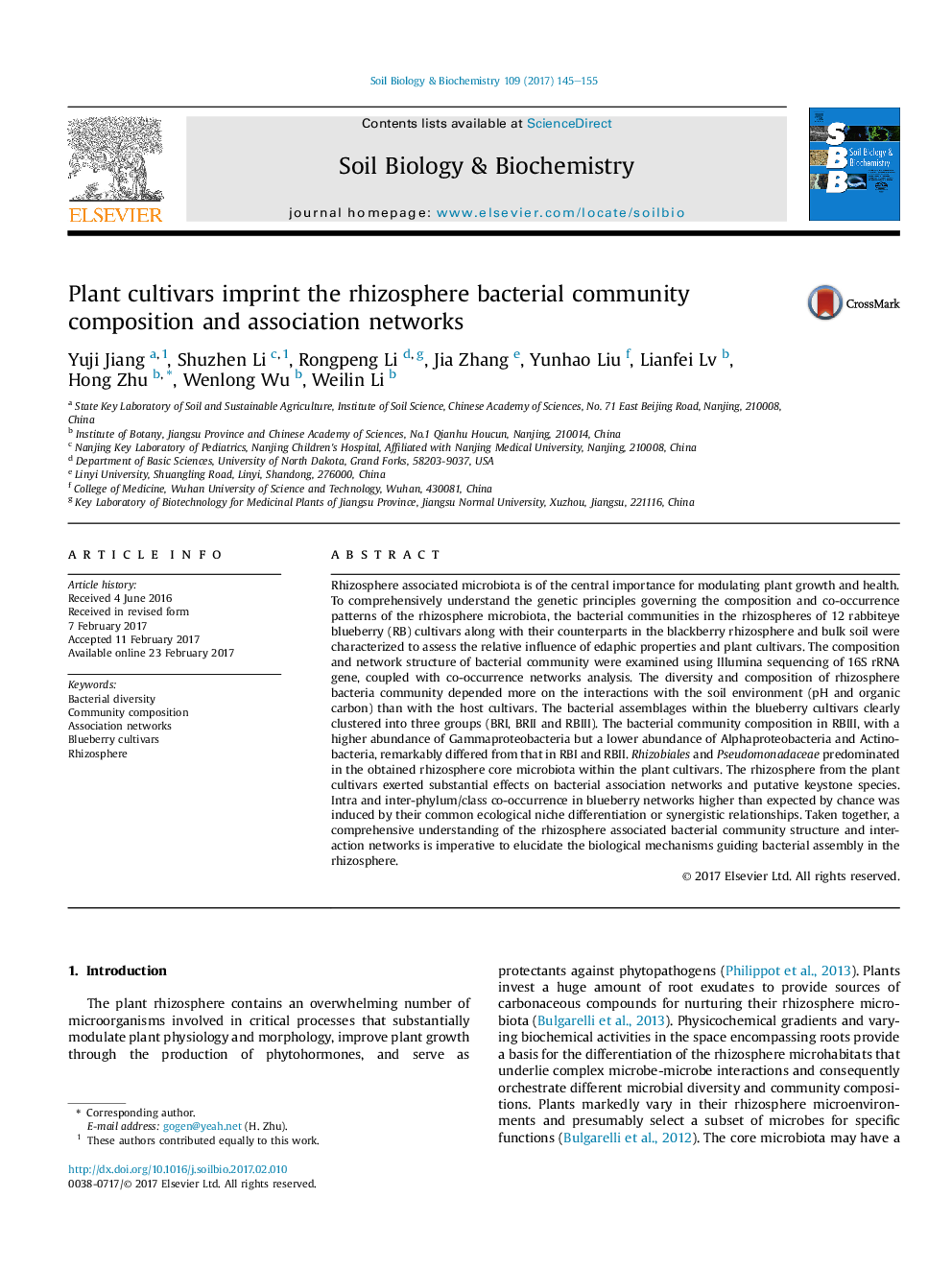| Article ID | Journal | Published Year | Pages | File Type |
|---|---|---|---|---|
| 5516483 | Soil Biology and Biochemistry | 2017 | 11 Pages |
â¢Plant cultivars significantly affected the rhizobacterial community composition.â¢Rhizobiales and Pseudomonadaceae dominated in the core microbiota of plant cultivars.â¢Plant cultivars strongly affected rhizobacterial networks and keystone species.â¢Intra and inter-taxa co-occurrence in networks was higher than expected by chance.
Rhizosphere associated microbiota is of the central importance for modulating plant growth and health. To comprehensively understand the genetic principles governing the composition and co-occurrence patterns of the rhizosphere microbiota, the bacterial communities in the rhizospheres of 12 rabbiteye blueberry (RB) cultivars along with their counterparts in the blackberry rhizosphere and bulk soil were characterized to assess the relative influence of edaphic properties and plant cultivars. The composition and network structure of bacterial community were examined using Illumina sequencing of 16S rRNA gene, coupled with co-occurrence networks analysis. The diversity and composition of rhizosphere bacteria community depended more on the interactions with the soil environment (pH and organic carbon) than with the host cultivars. The bacterial assemblages within the blueberry cultivars clearly clustered into three groups (BRI, BRII and RBIII). The bacterial community composition in RBIII, with a higher abundance of Gammaproteobacteria but a lower abundance of Alphaproteobacteria and Actinobacteria, remarkably differed from that in RBI and RBII. Rhizobiales and Pseudomonadaceae predominated in the obtained rhizosphere core microbiota within the plant cultivars. The rhizosphere from the plant cultivars exerted substantial effects on bacterial association networks and putative keystone species. Intra and inter-phylum/class co-occurrence in blueberry networks higher than expected by chance was induced by their common ecological niche differentiation or synergistic relationships. Taken together, a comprehensive understanding of the rhizosphere associated bacterial community structure and interaction networks is imperative to elucidate the biological mechanisms guiding bacterial assembly in the rhizosphere.
